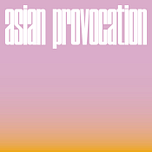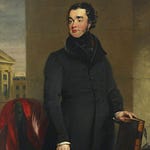George Orwell wrote a book with that title, on clarity.1 I remember the spine on the shelf in Berlin. I don’t remember the words. I remember the posture: clean, simple, obedient.
And yet—
Clarity as fantasy.
I’ve fought it all my life: linearity, logic, “good writing.” Campbell’s hero bullshit.2 Jung’s orientalist archetypes.3 Tolkien’s protofascist wank.4
Clarity is not innocence. It’s a weapon. It polices ambiguity. It disciplines what should be unruly. No one wants a neutral ass bitch. Clarity is obedience. Submission.
A week before my fortieth, and I’m still fighting this regime of clarity. Not to see clearer, but to protect what can’t be cleaned. What clarity makes me erase. What it demands, I apologise for.
Truth isn’t clarity. Truth is always too late. Truth detonates.
I remember being thirteen. CSIRO summer camp. I wanted to be with the jocks. I wanted a middle-class white childhood. My Russian teachers said sports would ruin my piano and violin fingers. No one would drive me to the fixtures. They pushed me back into music, science, art.
I found a classifieds page in the science magazine. Pen pals. A girl in South Australia. My first experience of eros. Phone sex before puberty.
My mum was shocked by the phone bill. STDs. Not the disease but Subscriber Trunk Dialling. Forty dollars for a single call. I feigned ignorance.
Later, at school, I fell for a girl with short black hair. She moved to Laos for a year. We wrote ourselves into love.
When she came back, it collapsed. The physical never matched the letters. I couldn’t be as raw in daylight as I was on the page. That was my first regret. I’ve been chasing it ever since.
Why do I write? Not for clarity. Not for truth. But for the distance between what can be said and what is lived.
Truth is not fact. Truth is time-delayed.
My father once whispered that he saw the neighbour being screamed at by his son. The indirect question within this parable? Will you do the same to me?
Later, in the middle of an argument, he asked me if Berlin had traumatised me. I was livid. My rage towards him had nothing to do with Berlin. Berlin only worsened what was already four decades old.
The truth: I was angry about things I could not say since I was a child. Abuse. Neglect. The melancholic lost object of the unspeakable.5
But even that isn’t the truth. The truth is the phantom that sits on my chest at night, the boulder that robs my breath.
Clarity wants a red thread. A VCR manual. Who the fuck wants to read that?
I lie awake at 3 am. Is this a return, or an exile from exile? I say I miss my friends. But many I chose already not to see. Even before death comes estrangement.
A friend died this year. The third in our ménage à trois called me with the news. She wanted closeness, a hug across the line. I was furious. Where were you all those years I felt alone?
Now I cry in my mother’s bed. They say the difference between LA and NY is that in LA, you cry in your car. But in New York, you cry on the streets. In Brisbane, I cry in silence, on my undead mother’s bed.
I spoke about crying during a speed date. The women mocked me.
Of all the dirty things I’ve done—fucking strangers, shitting in front of a dominatrix, flying a helicopter without a license—speed dating was the most humiliating. Because it admits the hunger. It admits need.
I turned forty this weekend.
I gave myself a week off. Away from the virtual. The luxury of abdication. Safe, hollow, relaxing, empty.
At a certain point, childish pleasures curdle. Desire does not excuse surrender.
I met a Zionist. I asked what she wanted. She said peace. I thought, liberation.
Birthdays do that: draw the line between wish and demand.
On mine, I wish you whatever you wish for the Palestinians.
Love is endurance. Love is incorruptible. Love, not lust, is the last sovereignty.
Early in the year, I spent a month in the ICU with my mother. I stood by other patients and their families in silence. Presence was all we shared. Slowly, my father and I try to resimulate a “normal” life. How does one find life again, after death?
I think about survivor’s guilt. Anxiety. Anger. The impossibility of action. Yet one tries: one foot forward, then another. Get out of bed. Swallow the breakfast. At least there is breakfast, I remind myself.
The day after I turned forty, I joined a protest. This time as a legal observer. To use my privilege as a citizen, not an alien. Standing with seventy thousand, I held back tears. Terrified when the crowd cheered. Because it isn’t over, the violence continues. I don’t dare celebrate. Even with the largest turnout in Brisbane’s history, the majority still cannot mouth the word Palestine.
And so, after genocide, what is left? What is there to say? We must live, I remind myself—joy as a political act. But then the wellness people appear. Their cheer. Their disavowal. There is a gap in which they will never understand. I do not explain. I do not teach. They call me cryptic. Dramatic. Too much.6
Let them.
Yes, I carry on. But the wound is deep. The yearning deepens. This is not only genocide, but a full assault on the psyche. Tomorrow, when the war has indeed begun. They need no physical prisons if they can colonise the mind. No guards if we surveil each other into silence.
“When was your last confession?” I asked her.
I like the line. The separation of the booth. The illicit proximity of breath through a grille.
“Twenty years ago,” she said.
It may have already begun.
The last time I asked another woman that question, it wasn’t in a church. It was at a BDSM dungeon near Wannsee, the lake where Kristallnacht was drafted. History and sex are layered on top of one another. Kneeling opposite me was a woman from the scene. She didn’t care for costumes or ritual. She wanted to be fucked. Not symbolically. Properly.
A friend had invited me I’d briefly slept with. We didn’t collapse into one another, so I brought someone else: my Bumble date, a tall Swedish feminist, all repression and rage. I dressed her in a Gestapo cap, trench coat, sports lingerie, and strapped her with a black cock. She didn’t need mine; she had her own.
The four of us were the youngest in the room. Everyone else was at least above fifty, the kind of aging swingers I used to imagine as a child: polite, well-fed, arranging canapés and cloakrooms. Charlottenburg decadents, softened by privilege, still rehearsing cruelty in leather.
Confession travels strange routes: through religion, through fascism, through sex. The question is always the same: what do you want to admit, and who do you want listening?
Orwell, G. (1946/2004). Why I write. In G. Orwell, Why I write (pp. 3–23). Penguin Books.
(Originally published in 1946 in Gangrel, Issue 4. Later collected in Why I Write, Penguin, 2004.)
Orwell’s prose on language and clarity sits uneasily alongside his colonial past. Before his literary career, he served as an imperial policeman in Burma (1922–1927), an experience that shaped his later essays such as Shooting an Elephant and Burmese Days. Critics note that his authority on “clarity” was shadowed by the violence and contradictions of empire (see Orwell, 1936/2000; Meyers, 2000).
Meyers, J. (2000). Orwell: Wintry conscience of a generation. W.W. Norton.
Orwell, G. (1936/2000). Shooting an elephant. In G. Orwell, Essays (pp. 1–7). Penguin.
Joseph Campbell popularized the “hero’s journey” in The Hero with a Thousand Faces (1949/2004), where he traced a universal monomyth structure across world mythologies. While influential in literature, psychology, and Hollywood scriptwriting, his work has been widely critiqued for reductionism, Orientalism, and universalizing tendencies. Scholars argue that Campbell flattened cultural difference into a Western mythic schema, obscuring colonial and gendered dynamics (Segal, 2000; Dundes, 1999).
Campbell, J. (2004). The hero with a thousand faces (Commemorative ed.). Princeton University Press. (Original work published 1949)
Dundes, A. (1999). Two tales of crow and coyote: Trickster transformation and the origin of death. Rowman & Littlefield.
Segal, R. A. (2000). Joseph Campbell: An introduction. Garland Publishing.
Carl Jung’s theory of archetypes—collective, universal symbols arising from the “collective unconscious”—was elaborated in works like Archetypes and the Collective Unconscious (1959/1981). His fascination with “Eastern” traditions (Hinduism, Buddhism, Taoism) often slipped into Orientalist appropriation, framing non-Western thought as mystical supplements to Western psychology. Critics argue this universalizing gaze reproduced colonial binaries (rational West vs. spiritual East) while erasing cultural specificity (Said, 1978; Bishop, 1999).
Bishop, P. (1999). Jung and the interpretation of the East. Routledge.
Jung, C. G. (1981). The archetypes and the collective unconscious (2nd ed., R. F. C. Hull, Trans.). Princeton University Press. (Original work published 1959)
Said, E. W. (1978). Orientalism. Pantheon Books.
J. R. R. Tolkien’s legendarium (The Hobbit, 1937; The Lord of the Rings, 1954–1955) has been read both as a conservative Catholic defense of tradition and as a protofascist fantasy. While Tolkien himself rejected Nazi racial theories, critics point to his mythologizing of heroic bloodlines, suspicion of modernity, and racialized depictions of Orcs as resonant with fascist aesthetics (Fimi, 2009; Sullivan, 2016). His work has also been accused of reproducing colonial hierarchies by idealizing the pastoral Shire while demonizing the industrialized “East” and “South.”
Fimi, D. (2009). Tolkien, race and cultural history: From fairies to Hobbits. Palgrave Macmillan.
Sullivan, C. W. (2016). Tolkien and the study of his sources: Critical essays. McFarland.
Tolkien, J. R. R. (1937). The hobbit. George Allen & Unwin.
Tolkien, J. R. R. (1954–1955). The lord of the rings (Vols. 1–3). George Allen & Unwin.
Freud, in Mourning and Melancholia (1917/1957), described melancholia as mourning gone awry—where the lost object is not relinquished but incorporated into the ego through identification. The subject turns the aggression felt toward the lost object back upon the self, producing the characteristic self-reproach. Melanie Klein radicalized this by situating melancholia in the infant’s relation to the mother’s breast: the child both loves and hates the object, fears its destruction by its own aggression, and internalizes a persecutory split. The “unspeakable” points to the fact that this lost object is never simply external but bound into unconscious fantasy, too entwined with desire and aggression to be symbolized without remainder (Freud, 1917/1957; Klein, 1940/1975).
Freud, S. (1957). Mourning and melancholia. In J. Strachey (Ed. & Trans.), The standard edition of the complete psychological works of Sigmund Freud (Vol. 14, pp. 243–258). Hogarth Press. (Original work published 1917)
Klein, M. (1975). Mourning and its relation to manic-depressive states. In M. Klein, Love, guilt and reparation and other works 1921–1945 (pp. 344–369). Hogarth Press. (Original work published 1940)
Édouard Glissant, in Poetics of Relation (1997), insists on the “right to opacity.” Against colonial demands for transparency and legibility, opacity affirms the subject’s refusal to be fully known or explained. To be called “cryptic” or “too much” is precisely to occupy that resistant space: rejecting the pedagogy of assimilation, affirming difference without translation. For Glissant, opacity is not a defect to be overcome but the ground of relation itself—an ethics of encounter that does not collapse alterity into comprehension.
Glissant, É. (1997). Poetics of relation (B. Wing, Trans.). University of Michigan Press.











